How to support the tunnel through the gravel layer
Time:2024-08-14From:sinorock View:
Tunneling is a complex engineering endeavor that often requires navigating through various geological formations, each presenting unique challenges. Among these, the gravel layer stands out due to its loose structure and poor cohesive properties. Supporting a tunnel through such a formation demands careful planning and the use of specialized materials. This article provides an in-depth look at the methods for supporting tunnels passing through gravel layers, with a special focus on the advantages of using self-drilling rock bolts, which have become a cornerstone in modern tunnel support systems.Understanding the Gravel Layer and Its Challenges
Why Does the Gravel Layer Need Support?
Gravel formations, characterized by loose particles and large voids, pose significant risks during tunnel excavation. The lack of cohesion in these layers can lead to a rapid decline in bearing capacity, resulting in unexpected issues such as instability, disintegration, and even collapse. Let’s explore the specific reasons why tunnels need robust support systems when crossing gravel layers.
Loose Structure
The inherent loose structure of the gravel layer makes it particularly vulnerable during excavation. In regions near rivers or seas, groundwater infiltration can erode the fine particles within the gravel, further reducing the mechanical strength of the already poorly cemented rock mass. This erosion can cause a significant drop in the layer's load-bearing capacity, leading to a high risk of failure during excavation.
Sudden Deformation
Gravel layers are highly sensitive to disturbances such as excavation. When the natural equilibrium of the formation is disrupted, the stress is redistributed, leading to a reduction in resistance. This can cause the load-bearing arch of the tunnel to fail rapidly, resulting in instability, disintegration, and potential collapse into the tunnel. The sudden deformation of the gravel layer is a major concern, as it can occur with little warning, posing a significant threat to the safety and progress of the tunnel construction.
Cracking of the Tunnel Face
The gravel layer is often composed of various-sized particles, including pebbles, boulders, and larger gravel, held together by weak calcareous or muddy fillers. These fillers are prone to weakening during excavation, leading to further loosening and cracking of the tunnel face. As a result, the rock mass above the tunnel arch can become unstable, breaking through the reserved deformation allowance and exerting pressure on the tunnel structure. This can lead to serious deformations and even partial collapses, compromising the integrity of the tunnel.
The Importance of Effective Support Systems
Given the challenges posed by gravel layers, it is crucial to implement effective support systems that can stabilize the formation and ensure the safety of the tunnel. Traditional support methods often struggle to cope with the loose and unstable nature of gravel layers, leading to delays and increased costs. However, modern engineering solutions, such as self-drilling rock bolts, offer a more efficient and reliable approach.
Self-Drilling Rock Bolts: A Modern Solution for Tunnel Support
Self-drilling rock bolts have revolutionized tunnel support systems, particularly in challenging conditions like gravel layers. These bolts combine drilling, grouting, and anchoring into a single process, providing a seamless solution for stabilizing loose and fractured rock formations. Let’s delve into the step-by-step process of using self-drilling rock bolts to support tunnels passing through gravel layers.
.jpg)
1. Drilling Preparation
Before drilling, it is essential to carefully plan the process based on the geological conditions of the gravel layer. The key factors to consider include the drilling angle, bolt length, water-cement ratio, and the selection of an appropriate drill bit. For tunnel advance support, self-drilling anchor bolts with diameters of 51mm and 76mm are commonly used. Adjusting the drilling angle according to the terrain and geological conditions is crucial to ensure optimal performance.
Proper preparation not only enhances the efficiency of the drilling process but also minimizes the risk of further destabilizing the gravel layer. By selecting the right parameters and tools, engineers can achieve better penetration and grouting performance, which is vital for the success of the support system.
2. Drilling While Grouting
One of the key advantages of self-drilling rock bolts is their ability to perform grouting simultaneously with drilling. As the drill advances, grout is injected into the borehole and surrounding fractures, filling voids and consolidating the rock mass. This process helps to stabilize the gravel layer by binding loose particles together and creating a more cohesive structure.
The grout not only enhances the load-bearing capacity of the gravel layer but also prevents further erosion by sealing cracks and fissures. As the grout hardens, it forms a strong bond between the self-drilling anchor bolt and the surrounding stable rock layer, ensuring long-term stability.
3. Hollow Anchor Bar Extension
In many cases, the required anchoring depth exceeds the length of a single hollow anchor bar. To achieve the desired depth, the bars can be extended using couplers. When the initial bar is drilled to within 30 cm of its end, a coupler is attached to connect the next bar, allowing the drilling to continue until the design depth is reached.
This extension process ensures that the support system penetrates deep into the stable rock layer, providing maximum anchorage and resistance to deformation. The exposed end of the final bar, typically about 10 cm, allows for the installation of plates and nuts, which secure the anchor in place and distribute the load across a larger surface area.
4. Pullout Test
After installation, it is essential to verify the performance of the self-drilling rock bolts through pullout tests. These tests measure the force required to pull the anchor out of the rock mass, ensuring that it meets the design specifications. Typically, at least three anchors are randomly selected for testing out of every 300 installed in the operational area.
The pullout test is a critical quality control measure that ensures the effectiveness of the support system. By confirming that the anchors are properly bonded and capable of withstanding the expected loads, engineers can proceed with confidence, knowing that the tunnel is safely supported.
Summary
Supporting a tunnel through a gravel layer is a challenging task that requires careful consideration of the unique properties of the formation. The loose structure, sudden deformation potential, and vulnerability to cracking make it essential to use a robust and reliable support system. Self-drilling rock bolts offer an ideal solution, combining drilling, grouting, and anchoring in a single, efficient process.
The importance of quality and reliability in tunnel support systems cannot be overstated, especially when dealing with complex geological conditions. Sinorock, a leading manufacturer of self-drilling rock bolts, has a proven track record in providing high-performance solutions for tunnel construction. With extensive experience and numerous successful applications, Sinorock’s self-drilling rock bolts offer unmatched stability and durability, making them the preferred choice for challenging projects. Whether you are working on a tunnel in a gravel layer or another demanding environment, Sinorock’s comprehensive support solutions ensure safety, efficiency, and peace of mind.
For more information on how Sinorock can assist with your tunnel construction needs, feel free to contact us at sinorockco@sinorockco.com.
latest news
-
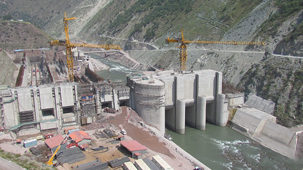
- What Are the Applications of SDA Bolts in Hydropower Stations?
- Time:2025-08-21From:This Site
- Learn how self-drilling anchor bolts enhance slope stability, tunnel support, and dam reinforcement in complex geological conditions at hydropower stations. Optimize hydropower projects with efficient, cost-effective, and eco-friendly solutions.
- View details
-
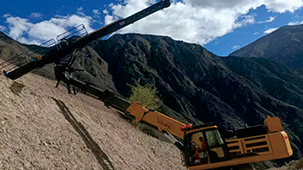
- Slope Stabilization with SDA Bolts: Benefits & Applications
- Time:2025-08-19From:This Site
- Discover how self-drilling anchor bolts (SDA bolts) provide superior slope stabilization for highways, railways, and tunnels. Learn their key benefits, installation process, and real-world applications in loose or collapsible soils.
- View details
-
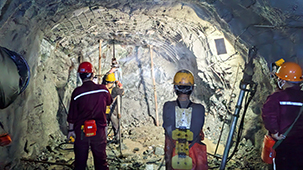
- How Self-Drilling Rock Bolts Enhance Tunnel Support in Fractured Rock?
- Time:2025-08-15From:This Site
- Discover how self-drilling rock bolts enhance tunnel support in fractured rock. Learn their benefits, installation steps, and real-world applications for safe, efficient tunneling.
- View details
-
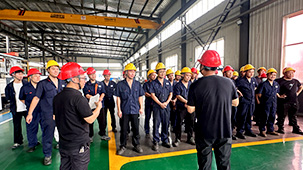
- Sinorock 2025 Quality Month | Strengthening Quality Foundations, Empowering Product Excellence
- Time:2025-08-13From:This Site
- Sinorock’s 2025 Quality Month, themed “Strengthening Quality Foundations, Empowering Product Excellence,” successfully concluded, reinforcing our commitment to superior product quality.
- View details
-

- Sinorock Safety Month 2025 | Everyone Speaks Safety, Everyone Can Respond
- Time:2025-07-03From:This Site
- Sinorock Safety Month 2025, centered on the theme "Everyone Speaks Safety, Everyone Can Respond - Spot Workplace Hazards," has wrapped up successfully!
- View details
-

- Quality Control: the Vital Factor of A SDA Bolt Factory
- Time:2025-01-09From:This Site
- Sinorock’s comprehensive quality control system, from supplier management to outgoing inspections, ensuring the highest standards for self-drilling anchor bolts in construction.
- View details
-
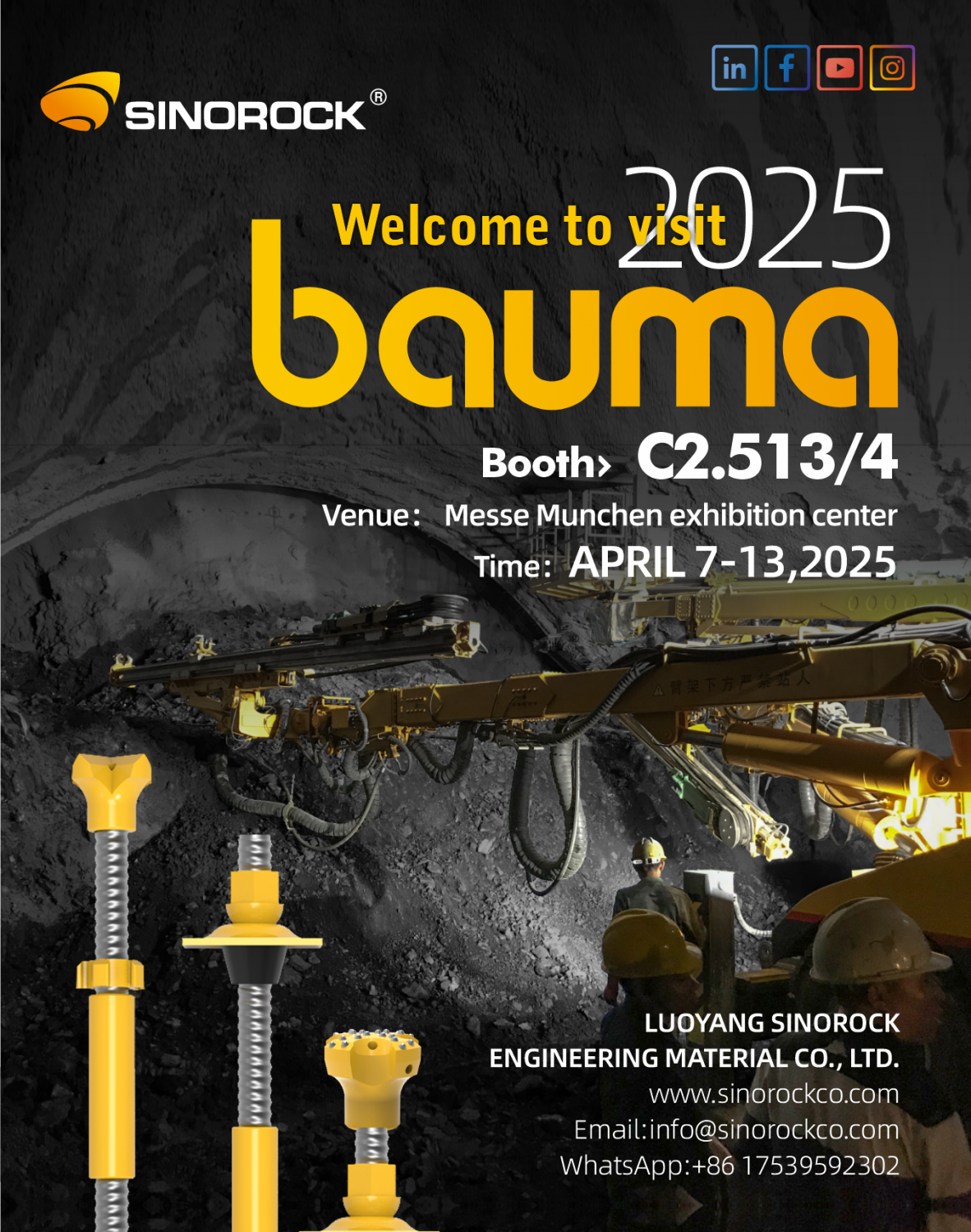
- Sinorock Invites You to Explore Proven Self-Drilling Anchor Bolt Solutions at bauma 2025
- Time:2025-03-07From:This Site
- From April 7–13, 2025, explore Sinorock’s Self-drilling anchor bolt solution at Booth C2.513/4 in Hall C2 of the Messe München Exhibition Center (Munich, Germany).
- View details
-
.jpg)
- SINOROCK to Attend EXPOMINA PERÚ 2024 in Lima, Peru
- Time:2024-08-10From:This Site
- Sinorock to Attend EXPOMINA PERÚ 2024 in Lima, Peru
- View details
-
.jpg)
- SINOROCK to Participate in MINING AND METALS CENTRAL ASIA 2024
- Time:2024-08-08From:This Site
- SINOROCK to Participate in MINING AND METALS CENTRAL ASIA 2024
- View details
 Download
Download 


